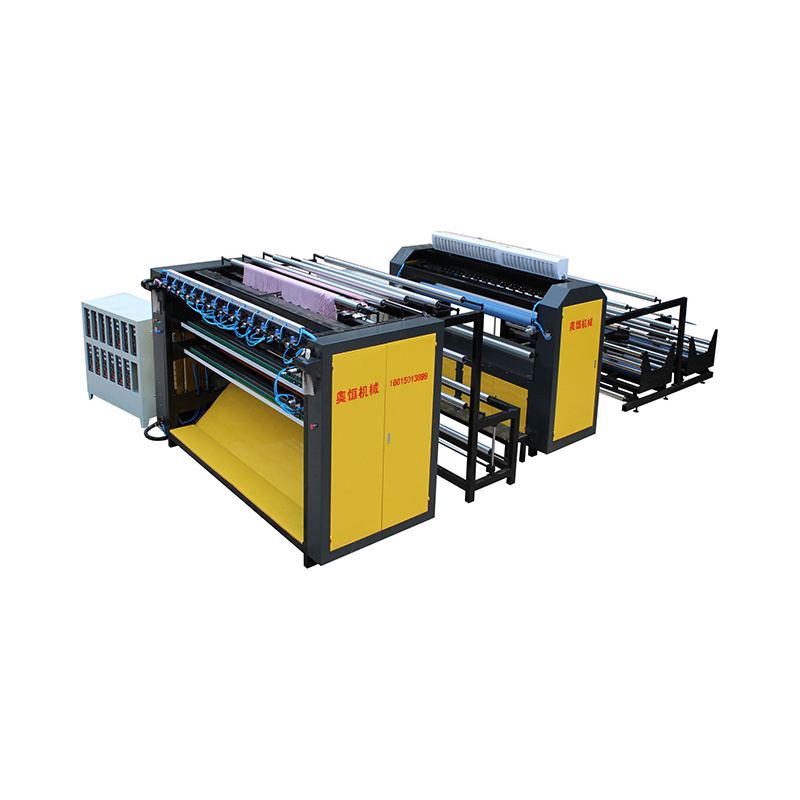Request A Quote

Automated textile cutting machines use a combination of advanced technologies and precise mechanical processes to handle pattern recognition and alignment for printed fabrics. This capability is critical for ensuring that the cuts are perfectly aligned with the design elements, which is especially important in industries like fashion, upholstery, and technical textiles. Here’s a more detailed explanation of how these machines achieve this:
Vision Systems
One of the most important technologies in automated textile cutting is the integration of vision systems. High-resolution cameras or sophisticated scanners are mounted on the machine to capture the fabric's surface in real time. These vision systems scan the printed design, capturing the intricate details of the pattern, including motifs, colors, and any alignment markers.
Once the fabric is scanned, image processing algorithms analyze the captured data to detect the location of specific design elements or alignment points. For example, the system might identify the edges of a floral pattern or the exact location of a logo. These algorithms are designed to recognize even subtle differences in color or contrast to ensure that the cutting path is perfectly aligned with the design.
Registration Marks
In many cases, fabrics with printed designs include pre-printed registration marks, such as dots, lines, or other symbols, which serve as reference points for the cutting machine. These marks are strategically placed during the printing process to help the machine locate and align the fabric accurately.
The cutting machine’s sensors detect these registration marks, enabling it to adjust the fabric’s position and ensure proper alignment before cutting begins. This process is dynamic, meaning that the machine continuously monitors these marks throughout the cutting process to maintain alignment, even if the fabric shifts slightly during operation.
Edge and Pattern Detection
For fabrics without registration marks, automated machines rely on sophisticated edge and pattern detection systems. These systems use sensors and vision technologies to identify the contours or outlines of the printed design directly on the fabric. For instance, edge-detection sensors track the boundaries of a repeated geometric pattern, ensuring that the cutting path follows the exact contours of the design.
In some cases, the machine employs color and contrast analysis to distinguish between different parts of the design. This approach is particularly useful for multi-colored patterns where precise differentiation is essential for accurate cutting.
Fabric Handling Mechanisms
Handling the fabric correctly is a critical aspect of maintaining alignment. Automated cutting machines employ several mechanisms to ensure the fabric remains stable during the process:
Tension Control: The machine maintains consistent tension on the fabric to prevent distortion or stretching that could misalign the printed design.
Vacuum Beds: A vacuum system holds the fabric firmly in place on the cutting table, reducing the risk of movement during cutting.
Conveyor Systems: For continuous cutting operations, conveyor belts ensure smooth movement of the fabric while maintaining alignment with the cutting path.

Software Integration
Modern textile cutting machines are equipped with advanced software that bridges the gap between design and cutting. CAD/CAM (Computer-Aided Design and Computer-Aided Manufacturing) software allows operators to upload digital patterns and overlay them directly onto the scanned image of the fabric. This enables precise placement of cutting paths in alignment with the printed design.
The software also supports real-time adjustments. If the vision system detects even minor misalignments, the software recalibrates the cutting path dynamically to compensate. Additionally, operators can preview the cutting lines superimposed on the fabric image, allowing them to make manual corrections before the actual cutting begins.
Laser and Projector Guidance
Some cutting machines use laser or projector systems to enhance alignment accuracy. Laser beams highlight the intended cutting path directly on the fabric, serving as a visual guide for operators to verify alignment. Similarly, projectors overlay a digital image of the cutting pattern onto the fabric, making it easier to adjust the fabric’s position if necessary.
Feedback Loops and Real-Time Monitoring
A key feature of automated cutting machines is their ability to monitor the cutting process in real time. Sensors and feedback loops continuously check the alignment and alert operators if discrepancies are detected. The machine may pause operations to allow for manual or automated recalibration, ensuring that the final cuts match the design perfectly.
Copyright © ChangZhou AoHeng Machinery Co., Ltd. All Rights Reserved

 English
English 中文简体
中文简体 русский
русский Español
Español